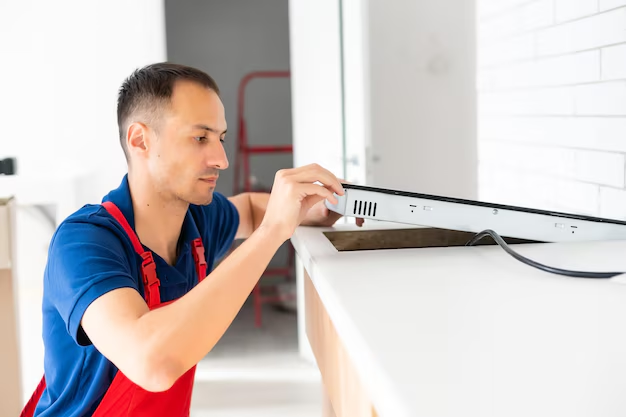Understanding the Voltage Requirements of Your Refrigerator: What You Need to Know
When it comes to home appliances, refrigerators hold a significant place due to their indispensable function in keeping food fresh and beverages cold. However, understanding the electrical requirements of these daily companions is not just for tech enthusiasts; it's practical knowledge for anyone keen on optimizing home energy consumption. In this article, we'll explore how many volts a refrigerator uses and delve into related topics that enhance your understanding and help you make informed decisions about your household electrical setup.
The Basics: How Many Volts Does a Refrigerator Use?
Most household refrigerators in the United States operate on 110 to 120 volts. This range is standard for most household appliances and fits within the typical electrical outlet specifications found in homes across the country. However, larger or commercial-grade refrigerators may require 220 to 240 volts, often necessitating special outlet installations.
In different parts of the world, the voltage requirements can vary due to regional standards. For instance, many European countries utilize a 220 to 240 volt system for household appliances, requiring appropriate plugs and transformers for compatibility when using imported devices.
Understanding the Power System in Homes
It's helpful to grasp why these voltage levels matter. Household wiring typically supports either a 120-volt or 240-volt circuit. The 120-volt circuits cater to everyday appliances like refrigerators, microwaves, and small kitchen gadgets. In contrast, 240-volt circuits are necessary for larger, more energy-intensive appliances like ovens and dryers.
The Science of Voltage: Why It Matters
Voltage is the electrical pressure that drives an electric current. It plays a vital role in determining how efficiently an appliance like a refrigerator operates. Here’s why this matters:
- Energy Efficiency: Appliances designed for specific voltage ranges run optimally. If the voltage is too low or too high, it can decrease efficiency and potentially damage the appliance.
- Safety: Using an appliance with incorrect voltage can pose significant safety risks, including electrical fires or appliance failure.
- Performance: Correct voltage ensures that the refrigerator’s compressor and motors function efficiently, maintaining consistent temperature control.
Quick Tip: Precision in Specifications
🔍 Always check the manufacturer's specifications, usually indicated on a label inside the refrigerator or in the user manual. This information clarifies voltage requirements and can guide you in ensuring compatibility with your home’s electrical system.
Exploring Related Considerations
To gain a comprehensive understanding of how voltage impacts your refrigerator's operation, consider these related elements:
1. Amperage and Power Consumption
The power consumption of a refrigerator, often measured in watts, is determined by both the voltage and the amperage (current flow). A standard formula used is:
Power (Watts) = Voltage (Volts) × Current (Amps)
Knowing the amperage helps in understanding the overall power needs and energy efficiency of your refrigerator. Most models consume between 20 to 40 amps depending on size and functionality. Energy-efficient models may use less power due to advancements in technology.
2. Energy Efficiency and Star Ratings
When selecting a refrigerator, energy efficiency should be a critical consideration. Appliances often come with an energy star rating that indicates their consumption levels relative to standard units. A higher star rating typically signifies better energy efficiency and more savings on electricity bills over time.
3. The Role of Transformers and Converters
For users in regions with different voltage requirements, transformers or converters can be used. These devices adjust the voltage to match the appliances needs:
- Step-Up Transformers: Increase voltage from a lower to a higher level.
- Step-Down Transformers: Decrease voltage from higher to the required lower level.
4. Impact of Voltage Fluctuations
Voltage fluctuations can affect appliance performance and longevity. It's advisable to invest in voltage stabilizers or surge protectors which buffer against unexpected spikes or drops in your electrical supply, thus prolonging the life of your refrigerator.
Key Takeaways and Consumer Tips
To encapsulate the essentials of our exploration, consider the following summary points that will help ensure you're maximizing your refrigerator's potential:
- 🔌 Use Correct Voltage: Ensure your refrigerator matches the voltage specification of your home’s electrical outlet.
- 💡 Optimize Energy Use: Look for refrigerators with high energy star ratings for maximum efficiency.
- 🛠️ Protect Your Appliance: Utilize surge protectors to safeguard against voltage fluctuations.
- 🔍 Investigate Utility Costs: Consider the refrigerator’s wattage for insights into potential energy bills.
- 🌍 Consider Global Standards: Be aware of voltage differences when relocating internationally or purchasing foreign-made appliances.
Essential FAQs: Addressing Common Inquiries
Do refrigerators consume a lot of electricity?
Refrigerators, being constantly operational, do account for a significant portion of household electricity use. However, modern energy-efficient models are designed to minimize this usage.
Can using the wrong voltage damage my refrigerator?
Yes, using an incorrect voltage can severely damage the refrigerator’s internal components and diminish its operational lifespan.
Is a dedicated circuit necessary for refrigerators?
It is generally recommended to have a dedicated circuit for your refrigerator to prevent overload and ensure stable performance.
Final Insight: The Power of Knowledge in Energy Management
Understanding the voltage requirements and related electrical considerations for your refrigerator is a powerful step towards better managing household energy consumption and ensuring appliance longevity. With today’s heightened awareness around energy efficiency and sustainability, taking small actions such as optimizing your refrigerator’s operation can have a considerable impact.
By integrating knowledge with practical measures, such as checking voltage requirements, utilizing energy-efficient models, and safeguarding against electrical fluctuations, you can confidently manage your refrigerator’s place in your home’s ecosystem. Remember, the energy decisions you make today influence not only your immediate utility costs but also contribute positively to broader environmental sustainability efforts.
